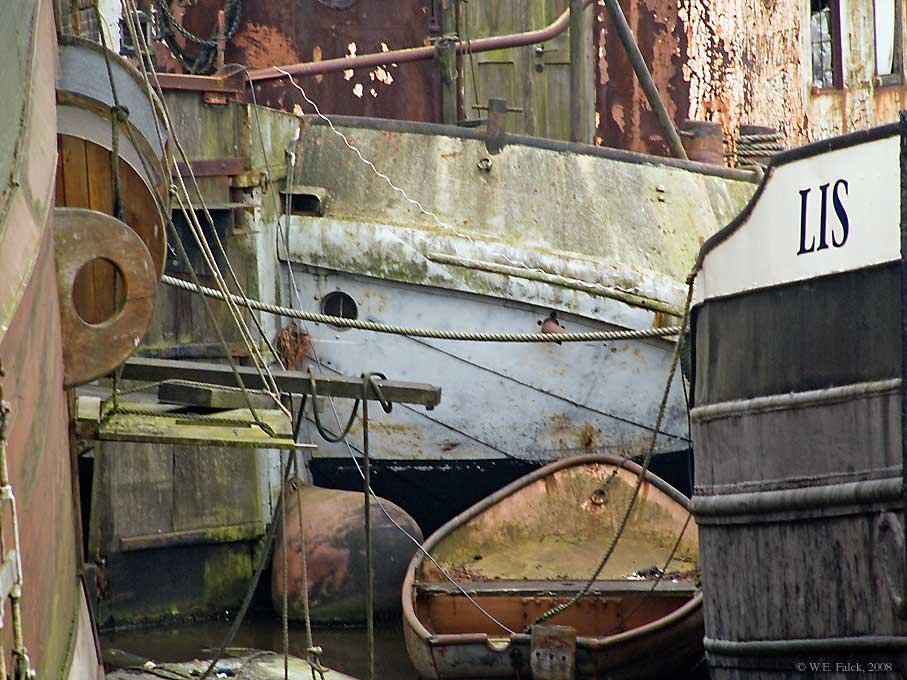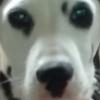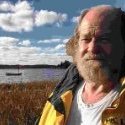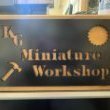HOLIDAY DONATION DRIVE - SUPPORT MSW - DO YOUR PART TO KEEP THIS GREAT FORUM GOING! (Only 66 donations so far out of 49,000 members - Can we at least get100? C'mon guys!)
×
-
Posts
6,602 -
Joined
-
Last visited
Reputation Activity
-
 wefalck got a reaction from Keith Black in Cangarda 1901 by KeithAug - Scale 1:24 - Steam Yacht
wefalck got a reaction from Keith Black in Cangarda 1901 by KeithAug - Scale 1:24 - Steam Yacht
Me too, I love those frilly ventilation grilles 👍🏻
I have been following on/off that YouTube channel on rebuilding and fitting out the TALLY HO, that probybly most of you are aware of, and recalling how they were struggling to get all the furniture etc. to fit makes you appreciate how difficult this is in a model ...
-
 wefalck got a reaction from KeithAug in Cangarda 1901 by KeithAug - Scale 1:24 - Steam Yacht
wefalck got a reaction from KeithAug in Cangarda 1901 by KeithAug - Scale 1:24 - Steam Yacht
Me too, I love those frilly ventilation grilles 👍🏻
I have been following on/off that YouTube channel on rebuilding and fitting out the TALLY HO, that probybly most of you are aware of, and recalling how they were struggling to get all the furniture etc. to fit makes you appreciate how difficult this is in a model ...
-
 wefalck reacted to KeithAug in Cangarda 1901 by KeithAug - Scale 1:24 - Steam Yacht
wefalck reacted to KeithAug in Cangarda 1901 by KeithAug - Scale 1:24 - Steam Yacht
As I continue to unravel the contours of aft guest cabin i realise there are a few hidden areas that don't feature on any of the photos. The obscured areas lie between the foot end of the berths and rear wall on either beam. I am going to have to guess what is going on here.
I am finding that card templates are the most successful way of progressing.
Once the templates seem sensible I replace them with 1/32 ply. I continue to utilise my Starbucks sticks to hold surfaces while the glue sets.
I am also using card templates to identify the shapes of the various walls. Below I have made the aft wall and some of the walls around the lockers. I have also clad the hull walls ready for painting.
And then continuing with more templates and more wall cladding.
Once the wall cladding panels were complete I moved on to the mahogany panelling. Here is the panel to the side of the double berth with its brass ventilation grille and two draws.
Followed by many other mahogany parts. Including the aft end draw fronts, various doors, shelfs / steps and more draws.
Getting the fitting of the mahogany parts correct seemed to take an age.
All of the wall panels needed painting white.
Plus another small ventilation grille.
I now need to get on and glue it all together - but this may be after Christmas. A Merry Christmas to you all ---- Ho! Ho! Ho!.
-
 wefalck got a reaction from Javelin in Rock used for ballast in ships around the 12th century,what size and shape?
wefalck got a reaction from Javelin in Rock used for ballast in ships around the 12th century,what size and shape?
In fact, some of the boulders that may have been used as ballast can be traced by geologists without any scientific instruments to very specific locations in Scandinavia. However, this does not mean that they have been picked up there, because these boulders have been transported by the glaciers during the various ice-ages over hundreds or thousands of kilometers to what are now the southern shores of the Baltic.
With the aid of trace-element analysis today, geologists (and criminologists) can now trace many rocks to very precise locations around the world. In this way we don't necessarily know the origin of a wreck, but we know, where it has loaded ballast.
-
 wefalck got a reaction from NavyShooter in Rock used for ballast in ships around the 12th century,what size and shape?
wefalck got a reaction from NavyShooter in Rock used for ballast in ships around the 12th century,what size and shape?
This is what I tried to imply with my previous post.
However, in the case of cogs, which was the subject of the original post, the scope is narrowed largely to northern Europe, so cogs indeed seem to have ventured into the Mediterranean (e.g. in the context of transporting Crusaders).
Geologists have deconvoluted (or at least tried to) the different ice-flows during the different glaciations, so that we roughly know where around the northern European coast which kind of boulders from which origin can be found. If I now find in a wreck boulders of different rock species, I can to some degree locate the areas where the crew had picked up these boulders or in other words the 'ports of call' - this is assuming that no transfer of ballast has occurred between ships.
There has been also for centuries, if not millenia, an extensive trade in stones of particular properties. For instance, mill and grindstones from sandstone deposits on Bornholm or the Rhineland can be found all over Europe. The rough-cut stones may have been transported as ballast or finished products partially replaced ballast in ships loaded with other products. Mapping such trade-routes is a specialised field in archaeology and history, drawing on geological, petrographic and mineralogical expertise.
-
 wefalck got a reaction from Kenchington in Rock used for ballast in ships around the 12th century,what size and shape?
wefalck got a reaction from Kenchington in Rock used for ballast in ships around the 12th century,what size and shape?
This is what I tried to imply with my previous post.
However, in the case of cogs, which was the subject of the original post, the scope is narrowed largely to northern Europe, so cogs indeed seem to have ventured into the Mediterranean (e.g. in the context of transporting Crusaders).
Geologists have deconvoluted (or at least tried to) the different ice-flows during the different glaciations, so that we roughly know where around the northern European coast which kind of boulders from which origin can be found. If I now find in a wreck boulders of different rock species, I can to some degree locate the areas where the crew had picked up these boulders or in other words the 'ports of call' - this is assuming that no transfer of ballast has occurred between ships.
There has been also for centuries, if not millenia, an extensive trade in stones of particular properties. For instance, mill and grindstones from sandstone deposits on Bornholm or the Rhineland can be found all over Europe. The rough-cut stones may have been transported as ballast or finished products partially replaced ballast in ships loaded with other products. Mapping such trade-routes is a specialised field in archaeology and history, drawing on geological, petrographic and mineralogical expertise.
-
 wefalck got a reaction from tmj in Rock used for ballast in ships around the 12th century,what size and shape?
wefalck got a reaction from tmj in Rock used for ballast in ships around the 12th century,what size and shape?
This is what I tried to imply with my previous post.
However, in the case of cogs, which was the subject of the original post, the scope is narrowed largely to northern Europe, so cogs indeed seem to have ventured into the Mediterranean (e.g. in the context of transporting Crusaders).
Geologists have deconvoluted (or at least tried to) the different ice-flows during the different glaciations, so that we roughly know where around the northern European coast which kind of boulders from which origin can be found. If I now find in a wreck boulders of different rock species, I can to some degree locate the areas where the crew had picked up these boulders or in other words the 'ports of call' - this is assuming that no transfer of ballast has occurred between ships.
There has been also for centuries, if not millenia, an extensive trade in stones of particular properties. For instance, mill and grindstones from sandstone deposits on Bornholm or the Rhineland can be found all over Europe. The rough-cut stones may have been transported as ballast or finished products partially replaced ballast in ships loaded with other products. Mapping such trade-routes is a specialised field in archaeology and history, drawing on geological, petrographic and mineralogical expertise.
-
 wefalck got a reaction from tmj in Pomeranian Rahschlup 1846 by wefalck – 1/160 scale – single-masted Baltic trading vessel
wefalck got a reaction from tmj in Pomeranian Rahschlup 1846 by wefalck – 1/160 scale – single-masted Baltic trading vessel
Hopefully not too many, Pat !
******************************
Another small toolmaking digression
One of the great advantages of watchmaker’s lathes is the multitude of work-holding options/spindle tooling. There are collets and chucks of many different sizes and types. One type, however, never seems to have been made and this is collets with square holes. In a way it is understandable, as making exactly centric square holes with the technology available 50+ years ago, would have been quite a challenge and expensive. Today with EDM that would not be a problem anymore. It seems that watchmakers actually had little need for them and when they needed to chuck up a winding stem at the square end, they would have used a so-called 8-screw chuck, which however, is worse to set up than a four-jaw independent chuck.
I expect to have to work at the ends of some square section materials soon. While I have also a centric four-jaw chuck for the lathe, it does not fit onto micro-mill and for parts of less than 2 mm edge length it is not very precise. Working on such small parts in a chuck does not feel very safe either. Therefore, I decided to finally implement and idea that I have been tossing about for years: square insert collets. A standard fitting for watchmaker’s lathes is a set of brass insert collets that are used to hold delicate objects, such as small screws by their threads. They fit into a 5.0 mm collet and have three slots to ensure concentricity. The idea was to make collets with two cross-wise slots (like the cheapo brass collets you can buy for handheld drills) and a bore in the centre. By combining an appropriate slot width with an appropriate bore, you can make square stock fit diagonally into the collet and centre it exactly.
I worked out the geometry needed for 1 mm, 1.5 mm and 2 mm square stock/parts respectively. The other dimensions were taken from the existing insert collets, i.e. the diameter of 5 mm and the length of 20 mm. Blanks were turned up from some quality old brass rod, bored from the back with 2.5 mm and threaded M3 for depth stops to made at some later stage, if needed. The blanks then were turned around and drilled 1.1, 1.7 and 2.4 mm respectively for the three collet sizes. A shallow groove turned in facilitates the extraction from the main collet. The parts then were transferred to the mill and set up in a vice with a square collet block for slotting exactly across the centre. They were all slotted 0.5 mm.
A test turn with a 1 mm square polystyrene rod shows that this works very well.
Size 1 mm, 1.5 mm and 2 mm square insert collets for 5 mm watchmaker’s lathe collet.
Back to the Rahschlup now.
-
 wefalck got a reaction from Mike Y in Rock used for ballast in ships around the 12th century,what size and shape?
wefalck got a reaction from Mike Y in Rock used for ballast in ships around the 12th century,what size and shape?
This is what I tried to imply with my previous post.
However, in the case of cogs, which was the subject of the original post, the scope is narrowed largely to northern Europe, so cogs indeed seem to have ventured into the Mediterranean (e.g. in the context of transporting Crusaders).
Geologists have deconvoluted (or at least tried to) the different ice-flows during the different glaciations, so that we roughly know where around the northern European coast which kind of boulders from which origin can be found. If I now find in a wreck boulders of different rock species, I can to some degree locate the areas where the crew had picked up these boulders or in other words the 'ports of call' - this is assuming that no transfer of ballast has occurred between ships.
There has been also for centuries, if not millenia, an extensive trade in stones of particular properties. For instance, mill and grindstones from sandstone deposits on Bornholm or the Rhineland can be found all over Europe. The rough-cut stones may have been transported as ballast or finished products partially replaced ballast in ships loaded with other products. Mapping such trade-routes is a specialised field in archaeology and history, drawing on geological, petrographic and mineralogical expertise.
-
 wefalck got a reaction from paul ron in Rock used for ballast in ships around the 12th century,what size and shape?
wefalck got a reaction from paul ron in Rock used for ballast in ships around the 12th century,what size and shape?
This is what I tried to imply with my previous post.
However, in the case of cogs, which was the subject of the original post, the scope is narrowed largely to northern Europe, so cogs indeed seem to have ventured into the Mediterranean (e.g. in the context of transporting Crusaders).
Geologists have deconvoluted (or at least tried to) the different ice-flows during the different glaciations, so that we roughly know where around the northern European coast which kind of boulders from which origin can be found. If I now find in a wreck boulders of different rock species, I can to some degree locate the areas where the crew had picked up these boulders or in other words the 'ports of call' - this is assuming that no transfer of ballast has occurred between ships.
There has been also for centuries, if not millenia, an extensive trade in stones of particular properties. For instance, mill and grindstones from sandstone deposits on Bornholm or the Rhineland can be found all over Europe. The rough-cut stones may have been transported as ballast or finished products partially replaced ballast in ships loaded with other products. Mapping such trade-routes is a specialised field in archaeology and history, drawing on geological, petrographic and mineralogical expertise.
-
 wefalck reacted to JacquesCousteau in Bateau de Lanvéoc by JacquesCousteau - Scale 1:32 - From Ancre Plans
wefalck reacted to JacquesCousteau in Bateau de Lanvéoc by JacquesCousteau - Scale 1:32 - From Ancre Plans
Thanks! There's certainly some variety, I wonder to what extent that comes down to different boatbuilders having different ways of doing things. A higher stern than bow seems a constant.
-
 wefalck reacted to mbp521 in Caroline N by mbp521 - FINISHED - Scale 1:64 - Mississippi River Towboat
wefalck reacted to mbp521 in Caroline N by mbp521 - FINISHED - Scale 1:64 - Mississippi River Towboat
Hello everyone,
The time has finally come to wrap this build up. The last bits of detail have been completed. Paint touchups have been done and time to install the ensign, mount the boat to its permanent base, get it under glass and send it to its new home.
I made the ensign the way I normally do. I printed the image on a sheet of copy paper, folded and glued the sides together then crumpled it until it was soft and pliable.
I then trimmed up the edges and touched up the color along the edges so the white paper would not show through, then mounted the flag to the halyard.
Next step was to engrave the data plate. This was accomplished with the laser tool. I'm still trying to figure out how I have gotten along without this thing for so long. Anyway, I added a few little tidbits of info on the plate for the display. I thought it makes a nice professional touch to the build.
Then it was on to mounting the model to its new base. The base is a Black Walnut slab that was sanded and varnished by another friend of mine and the person I am building the model for. The boat was centered on the slab and with great hesitation, the holes were drilled in the beautiful piece of wood for the mounting pedestals.
The mirror and data plate were held into place with some double-sided tape.
More pictures of it on the base.
Then it was time to install the cover. This was special ordered by the soon to be new boat owner, I haven't developed the talent to cut and glue plexiglass yet so I didn't want to risk messing that project up. Since the model has a 300+ mile trip to make to its new home I left most of the masking on to protect the plexiglass from getting scratched.
So that is it for this build. It has been an adventure. There were a few times where I felt that I was never going to get this finished due to life getting in the way, but determination persevered and here we are. I want to thank everyone that followed along for sticking with me throughout this journey, your words of encouragement are what kept me going.
As for what is next, I am still not sure. I have several ideas rolling around in my head. I may scan through some of the other MSW builds to get some ideas, but for now I am going to clean the bench and enjoy the holidays before I make a decision. Whatever I come up with I'll be sure to include everyone on the next journey.
Once the Caroline N is at her new home, I've asked my friend to send me pictures of her proudly displayed so I can share them here.
For now, thank you all for hanging out with me on this build. I want to wish you all a Happy Holidays in whichever way you celebrate. Be safe, stay warm and cherish all the time you get to spend with loved ones.
- Brian
-
 wefalck got a reaction from paul ron in Rock used for ballast in ships around the 12th century,what size and shape?
wefalck got a reaction from paul ron in Rock used for ballast in ships around the 12th century,what size and shape?
In fact, some of the boulders that may have been used as ballast can be traced by geologists without any scientific instruments to very specific locations in Scandinavia. However, this does not mean that they have been picked up there, because these boulders have been transported by the glaciers during the various ice-ages over hundreds or thousands of kilometers to what are now the southern shores of the Baltic.
With the aid of trace-element analysis today, geologists (and criminologists) can now trace many rocks to very precise locations around the world. In this way we don't necessarily know the origin of a wreck, but we know, where it has loaded ballast.
-
 wefalck reacted to Waldemar in Bateau de Lanvéoc by JacquesCousteau - Scale 1:32 - From Ancre Plans
wefalck reacted to Waldemar in Bateau de Lanvéoc by JacquesCousteau - Scale 1:32 - From Ancre Plans
Just to “maliciously” make your choices even more difficult , I’m including further images of boats of this type, from the so-called Album du Ponant of 1679.
By the way, many thanks for your report and photos from Madrid.
-
 wefalck reacted to JacquesCousteau in Bateau de Lanvéoc by JacquesCousteau - Scale 1:32 - From Ancre Plans
wefalck reacted to JacquesCousteau in Bateau de Lanvéoc by JacquesCousteau - Scale 1:32 - From Ancre Plans
Thanks, Waldemar! That's certainly much more sheer than the monograph drawings.
After a lot of consideration, I decided to adjust the sheer line slightly in order to get a little bit more of a curve than in the monograph drawings, but not quite as much as in the Pâris plan. It's a small adjustment, a matter of a millimeter or so amidships, but I think it looks better without deviating too drastically from the monograph plans.
Of course, the photo is barely distinguishable from the previous photos...
I've now marked out the wales and sheerline. I'll next need to remove the thread, lightly sand the fore abd aft sides of the frames, and then begin planking.
-
 wefalck reacted to LJP in J H Crawford by LJP (Lawrence Paplham) - Scale 1:64 - an 1894 to 1898 Wisconsin sternwheeler
wefalck reacted to LJP in J H Crawford by LJP (Lawrence Paplham) - Scale 1:64 - an 1894 to 1898 Wisconsin sternwheeler
I installed the hurricane deck beams. I placed some of the stanchions and the cover for the stacks. I will still need to cut the beams to length at the bow and add more of the stanchions on the beams after the railings are set.
The railings will be my next project. The paper on the boiler deck shows where the stanchions and spindles for the railing will be located. I will use a template for the railings that I used for Thistle. After that, I can add the carlines and the rest of the stanchions on the deck beams. A long way to go yet, but JHC is beginning to look like a real sternwheeler.
-
 wefalck reacted to michael mott in Bristol Pilot Cutter by michael mott - 1/8 scale - POF
wefalck reacted to michael mott in Bristol Pilot Cutter by michael mott - 1/8 scale - POF
Good morning everyone, well it is morning here, thanks for all the kind welcomes. Eyes are settling down, it is strange now having to get used to becoming farsighted after being nearsighted all mi life. my temporary reading glasses from the pharmacy are definitely a help but have to take the off when I look up as things go blurry.
only a few more days before I can start working in the workshop .
Michael
-
 wefalck got a reaction from Mike Y in Pomeranian Rahschlup 1846 by wefalck – 1/160 scale – single-masted Baltic trading vessel
wefalck got a reaction from Mike Y in Pomeranian Rahschlup 1846 by wefalck – 1/160 scale – single-masted Baltic trading vessel
Hopefully not too many, Pat !
******************************
Another small toolmaking digression
One of the great advantages of watchmaker’s lathes is the multitude of work-holding options/spindle tooling. There are collets and chucks of many different sizes and types. One type, however, never seems to have been made and this is collets with square holes. In a way it is understandable, as making exactly centric square holes with the technology available 50+ years ago, would have been quite a challenge and expensive. Today with EDM that would not be a problem anymore. It seems that watchmakers actually had little need for them and when they needed to chuck up a winding stem at the square end, they would have used a so-called 8-screw chuck, which however, is worse to set up than a four-jaw independent chuck.
I expect to have to work at the ends of some square section materials soon. While I have also a centric four-jaw chuck for the lathe, it does not fit onto micro-mill and for parts of less than 2 mm edge length it is not very precise. Working on such small parts in a chuck does not feel very safe either. Therefore, I decided to finally implement and idea that I have been tossing about for years: square insert collets. A standard fitting for watchmaker’s lathes is a set of brass insert collets that are used to hold delicate objects, such as small screws by their threads. They fit into a 5.0 mm collet and have three slots to ensure concentricity. The idea was to make collets with two cross-wise slots (like the cheapo brass collets you can buy for handheld drills) and a bore in the centre. By combining an appropriate slot width with an appropriate bore, you can make square stock fit diagonally into the collet and centre it exactly.
I worked out the geometry needed for 1 mm, 1.5 mm and 2 mm square stock/parts respectively. The other dimensions were taken from the existing insert collets, i.e. the diameter of 5 mm and the length of 20 mm. Blanks were turned up from some quality old brass rod, bored from the back with 2.5 mm and threaded M3 for depth stops to made at some later stage, if needed. The blanks then were turned around and drilled 1.1, 1.7 and 2.4 mm respectively for the three collet sizes. A shallow groove turned in facilitates the extraction from the main collet. The parts then were transferred to the mill and set up in a vice with a square collet block for slotting exactly across the centre. They were all slotted 0.5 mm.
A test turn with a 1 mm square polystyrene rod shows that this works very well.
Size 1 mm, 1.5 mm and 2 mm square insert collets for 5 mm watchmaker’s lathe collet.
Back to the Rahschlup now.
-
 wefalck got a reaction from kgstakes in Innocraftsman Mill
wefalck got a reaction from kgstakes in Innocraftsman Mill
This is just my irrelevant opinion, but I would not have a lot of confidence into the rigidity, stiffness, and accuracy of set-ups that involve hand-held rotary tools in general. While it can be useful to have a tilting head, tramming it in exactly vertical can be a pain. However, there is no problem with side pressure in the rotary tool itself, as these are designed for that.
I can very well understand that space can be an issue, which seems to make combination machines attractive, but in general, space saving is bought with time spending for set-ups.
-
 wefalck reacted to KeithAug in Herzogin Cecilie 1902 by Jim Lad - Four Masted Barque
wefalck reacted to KeithAug in Herzogin Cecilie 1902 by Jim Lad - Four Masted Barque
Realtor - for those that need translation
-
 wefalck reacted to Mark Pearse in Ranger type yacht by Mark Pearse - 1:12 - SMALL
wefalck reacted to Mark Pearse in Ranger type yacht by Mark Pearse - 1:12 - SMALL
thanks all,
Some more tinning, & I am very happy with the look of it. And also the adaptability, you can polish it to a mirror finish, or to a finish below that - & the impression is different with both. Also, metals are different - colour-wise silver is very warm, nickel is warm & stainless steel is cooler, more grey. The tin plating when polished has a colour similar to stainless steel.
The propeller plated, & with a washer as the visible face of the bearing. Note the difference between the polished blades & satin anode, (the rounded cone). To achieve this, I gave the anode a sanding with 120 grit before the tinning.
And installed:
And the headsail tracks, now with brass pins on the back for fixing to the plywood deck:
And installed:
-
 wefalck got a reaction from tmj in Pomeranian Rahschlup 1846 by wefalck – 1/160 scale – single-masted Baltic trading vessel
wefalck got a reaction from tmj in Pomeranian Rahschlup 1846 by wefalck – 1/160 scale – single-masted Baltic trading vessel
Thanks again for your moral support, verbal and via the buttons !
******************************************************************
A Mystery Resolved
When constructing the hull of the Rahschlup, it bugged me that there was no obvious way to free the deck quickly from larger amounts of water taken over in bad weather. The Jacht/Jagt-type vessels often have a gap between the covering board and lowest bulwark plank, but on all illustrations of Rahschlup-type vessels no such gap was visible. Freeing ports, as on modern ships came into use only later and the lead-lined gutters would not be sufficient.
Then I scanned through the images of the restoration project (https://www.jensine.dk, but the link does not seem to work at the moment) for the Danish Jagt JENSINE (1852) for a different reason and two images caught my eye:
They show that sections of the lowest bulwark plank are actually hinged and can swing out. In calm weather they are secured with latches. Subsequently, I noticed similar features on other restored vessels.
I am not sure that this is an ideal solution for securing, as the wedges would need to be removed individually and kept for re-use. Also, the latch is attached to the plank section and could get caught between the plank and the covering board. I think a solution with a hook fastened to the stanchion that engages a staple in the plank would be a better solution.
How to represent such parts now in 1/160? Producing the hinges will be relatively simple, although they will be tiny, but the hooks is another matter.
For the hinges I took 2 mm long lengths of 0.1 mm tinned copper wire that was squeezed flat on my repurposed watchmaker jewelling tool to a predetermined thickness. These jewelling tools have a micro-meter stop that allows to very precisely set the distance between the anvil and the stamp. By squeezing, the ends of the flattened wire become rounded, which suited well the purpose. There was also a slight dimple in the anvil from the turning, which resulted in a slight boss in the middle of the strip to simulate the actual hinging mechanism. The ‘hinges’ were glued on with varnish.
The latches are another matter and had to be much simplified. A double L-shape was bent into a short length of 0.1 mm tinned copper wire to simulate the hook and then one end was squeezed flat to represent the part that would have been screwed to the bulwark. These tiny pieces were then glued with varnish to the lowest bulwark planks and to the bulwark stanchion.
I decided to make only every second space between the bulwarks ‘swinging out’ and scored the lowest plank on the outside lightly to mark these sections.
Unfortunately, these parts are so tiny, that they are almost impossible to photograph, unless I use my macro-photography set-up and then they would probably look discouragingly crude …
To be continued …
-
 wefalck reacted to Paul Le Wol in Steam Schooner Wapama 1915 by Paul Le Wol - Scale 1/72 = From Plans Drawn By Don Birkholtz Sr.
wefalck reacted to Paul Le Wol in Steam Schooner Wapama 1915 by Paul Le Wol - Scale 1/72 = From Plans Drawn By Don Birkholtz Sr.
Hi Everyone, figured I would get one more update in before the end of the year. Thank you for all of your Comments and Likes. The covering boards were started probably in an attempt to delay working on the four ladders and three sets of steps. A 1/32" x 1/32" strip of wood was glued to a 1/32" x 1/8" strip and painted before attaching.
Once I had gone as far as possible with the covering boards I started on the ladders that are made from 1/32" x 1/8" walnut. A jig was made to hold the stringers and then the riser planks which were cut to around 3/32" wide were attached using a 1/32" strip as a spacer. After they were assembled they were given a dark grey wash.
The iron casing for the stack was made and the deadlights were attached using a properly spaced template. The deadlights were cut from 1/8" styrene rod using the Slicer.
I was going to use brass tube for the stack but couldn't find anything to make the band. I decided to give Tinkercad a try. I found it to be a fun experience and ended up subbing out some STL files to a friend with a printer. I think they came out pretty good after some cleanup.
The wheelhouse was assembled using 1/32" plywood. The window openings are lined with 1/32" x 1/32" boxwood. Now the siding has begun.
The hand rails for the ladders up to the cabin deck had to be done in combination with the stanchions that support the boat deck. The stanchions have a fancy turned section in the middle. Mine are not going to be that fancy. A "micro lathe" was made out of a piece of 1/8" square brass tube with a corner filed off the length of the turned section. A piece of 3/32" x 3/32" AYC is slid into the tube and the corner is sanded off at the slot. Then taken out and repeated until all four edges are sanded. They then need a bit of finish sanding.
Like other people have found, the store bought brass handrail stanchions needed to be sanded down quite a bit. The next ones will be sanded even more.
Now the rest of the boat deck can be framed. Hope to see you in The New Year!
-
 wefalck reacted to Jim Lad in Herzogin Cecilie 1902 by Jim Lad - Four Masted Barque
wefalck reacted to Jim Lad in Herzogin Cecilie 1902 by Jim Lad - Four Masted Barque
Not a lot of progress on the 'Duchess' of late. The last couple of times I've been at the museum I've spent most of the day talking to interested visitors rather than working on the model - but that's a good thing - I continue to wonder at the number of kids and teens who say things like, "That's so cool" when looking at the model and asking detailed questions about the building process.
The mizzen topgallant and royal braces have now been run, but not rigged to the yards, so that's now the total rigging on the square sails until I get the ratlines on and can finish off the braces. I've also started getting the lead blocks on the jigger, as can be vaguely seen on the image below. Ther's still a bit of fiddling about on deck needed before I actually rig the spanker boom, as the spanker sheet is tucked in behind the steering box and gratings.
John
-
 wefalck got a reaction from Canute in Billy 1938 by Keith Black - 1:120 Scale - Homemade Sternwheeler
wefalck got a reaction from Canute in Billy 1938 by Keith Black - 1:120 Scale - Homemade Sternwheeler
Fair enough, forget, what I said. I fully understand that version 7 is enough.










